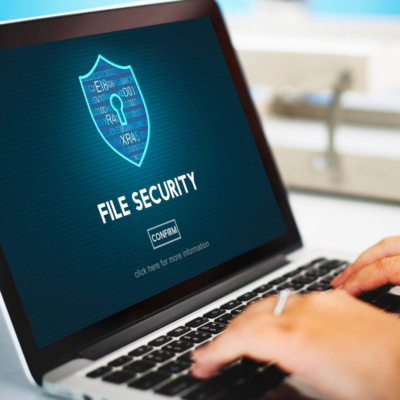The United States has a deep and complex relationship with firearms. Guns Law are intertwined with history, culture, and individual rights, but they are also at the center of pressing social concerns. Mass shootings, accidental deaths, and gun violence in communities have brought urgent attention to the limits and responsibilities surrounding gun ownership. At the same time, the Second Amendment guarantees the right to bear arms, creating a legal and moral framework that Americans deeply value.
For many, the gun debate is not just political—it is personal. Families who have lost loved ones to gun violence, hunters who rely on firearms for tradition, and everyday citizens weighing their personal safety all experience the issue differently. This intersection of law, ethics, and practicality makes the conversation both emotional and necessary.
Legal Foundations: The Second Amendment
The Second Amendment of the U.S. Constitution states: “A well regulated Militia, being necessary to the security of a free State, the right of the people to keep and bear Arms, shall not be infringed.” Over the years, courts have interpreted this right in different ways, balancing individual liberties with public safety.
Supreme Court decisions have affirmed the individual right to possess firearms for lawful purposes, such as self-defense, while also acknowledging that governments can regulate certain aspects, like prohibiting firearms for felons or requiring licensing. Legal debates often center on where these limits should be drawn and how far regulation can go without violating constitutional rights.
For advocates of the Second Amendment, guns symbolize freedom, personal responsibility, and protection against tyranny. Legal interpretations of this right are seen as foundational to preserving liberty and individual choice. For others, public safety concerns demand stricter regulation, highlighting the tension between constitutional rights and the collective well-being.

Moral and Ethical Considerations
The moral debate around guns is rooted in questions of responsibility, harm, and societal impact. Is the right to personal protection absolute, or does it carry a responsibility to prevent harm to others? How do communities weigh the value of individual liberty against the safety of neighbors, children, and vulnerable populations?
Many argue that ethical gun ownership requires training, safe storage, and respect for others’ lives. Others believe that moral responsibility extends to society as a whole, emphasizing policies that reduce the risk of violence without eroding rights. This ethical dimension highlights that the conversation is not just about legality—it is about shared values, empathy, and the consequences of actions.
Victims’ families often frame the debate in deeply human terms. Stories of children harmed in accidental shootings, teenagers lost to violence, or communities traumatized by gun crimes reveal the moral urgency behind regulation. Conversely, individuals in rural areas or communities with high crime rates often emphasize moral obligations to self-defense, adding complexity to the ethical conversation.
Practical Challenges of Gun Ownership
Beyond legal and moral perspectives, practical realities shape the debate. Firearms are powerful tools with both protective and destructive potential. Safety training, responsible storage, and awareness of local laws are essential for reducing accidents and preventing misuse.
Practical considerations also include the impact on law enforcement, healthcare, and emergency response. Gun-related injuries place significant demands on hospitals, first responders, and social services. At the same time, responsible gun owners argue that firearms are essential for personal protection, hunting, and sporting activities, and that restrictions should not penalize law-abiding citizens.
Balancing practicality with freedom requires nuanced solutions. Policies that promote education, safe storage, background checks, and targeted restrictions can address real-world risks without undermining constitutional rights.
Gun Control Policies: Goals and Approaches
Gun control advocates focus on reducing violence while preserving individual rights wherever possible. Policy approaches vary, including:
1. Universal Background Checks
Ensuring that all gun purchasers undergo criminal and mental health screenings helps prevent firearms from reaching those who may pose a risk to themselves or others.
2. Safe Storage Requirements
Mandating secure storage and trigger locks reduces accidental shootings, particularly among children.
3. Restrictions on High-Capacity Weapons
Limiting access to certain firearms or magazines aims to prevent mass shootings while maintaining access to guns for self-defense or recreation.
4. Licensing and Training Programs
Education and training promote responsible ownership and ensure users understand both legal and safety obligations.
The goals of gun control policies are often framed as enhancing public safety while respecting constitutional protections. Advocates argue that targeted regulation can reduce deaths, injuries, and crime without undermining the fundamental right to bear arms.
Second Amendment Advocates: Rights and Responsibilities
Supporters of the Second Amendment emphasize individual liberty, self-defense, and historical precedent. They argue that firearms are integral to personal freedom and national identity. For many, the ability to own a gun is both a legal right and a moral duty to protect oneself and one’s family.
This perspective also stresses personal responsibility. Advocates often champion voluntary safety measures, community education, and opposition to policies they see as overly restrictive or ineffective. From this viewpoint, education and culture—rather than blanket regulation—are the keys to preventing gun misuse.
Bridging the Divide
Despite polarized debates, common ground exists. Both sides generally agree on the importance of preventing gun violence, protecting children, and promoting responsible ownership. Dialogue can focus on shared values, such as:
- Encouraging safe practices through training and storage.
- Supporting law enforcement efforts to keep firearms out of criminal hands.
- Promoting mental health resources to reduce risks associated with gun-related incidents.
Finding compromise requires recognizing the human experiences behind statistics. Families affected by gun violence, responsible owners, and community leaders all have perspectives that can inform balanced policies. When policymakers humanize the debate rather than treat it as purely ideological, solutions become more feasible and widely accepted.
Case Studies and Community Solutions
Some communities have implemented innovative approaches to reduce violence while respecting rights. Programs combining education, mental health support, and voluntary buyback initiatives have reduced shootings in targeted areas. Urban and rural solutions differ, but both emphasize local engagement, collaboration with law enforcement, and public participation.
Gun safety programs in schools, partnerships with local organizations, and community outreach campaigns demonstrate that practical, human-centered solutions are possible. By empowering citizens to be part of the solution, these initiatives reinforce the shared responsibility inherent in gun ownership.
The Human Dimension
The debate over gun control is never just about laws—it is about lives. Children accidentally harmed, families grieving from shootings, and communities living in fear are real stories that must guide policy. Likewise, law-abiding gun owners, hunters, and individuals concerned about personal safety have deeply felt stakes in how laws are shaped.
Understanding these human experiences helps frame the debate with empathy and nuance. Recognizing that Americans are diverse in their backgrounds, values, and needs allows for policies that protect safety while honoring rights.

Moving Toward Solutions
The path forward lies in balance. Thoughtful legislation can reduce harm, education can foster responsibility, and community engagement can build trust across divides. Both rights and safety must coexist, and pragmatic policies should reflect the shared human desire for protection, freedom, and dignity.
Policymakers, community leaders, and citizens can work together to promote dialogue, craft nuanced regulations, and support programs that prevent violence. Technology can assist with tracking firearms, improving background checks, and educating owners. Social initiatives can reinforce safe practices and create community norms around responsible gun use.
Conclusion
Gun control versus Second Amendment debates are legal, moral, and practical in nature. They reflect deeply held values about freedom, responsibility, safety, and justice. The challenge is finding common ground that honors constitutional rights while protecting communities from harm.
By humanizing the conversation, focusing on shared goals, and implementing thoughtful policies, America can navigate this complex landscape. Responsible ownership, public safety, and respect for constitutional freedoms are not mutually exclusive—they can coexist.
A society that values both liberty and life requires empathy, understanding, and action that prioritizes human well-being alongside individual rights. Balancing these elements is not easy, but it is possible—and necessary for a safer, more united America.
Do Follow USA Glory On Instagram
Read Next – Transforming Housing: Powerful Solutions to End Homelessness Now






